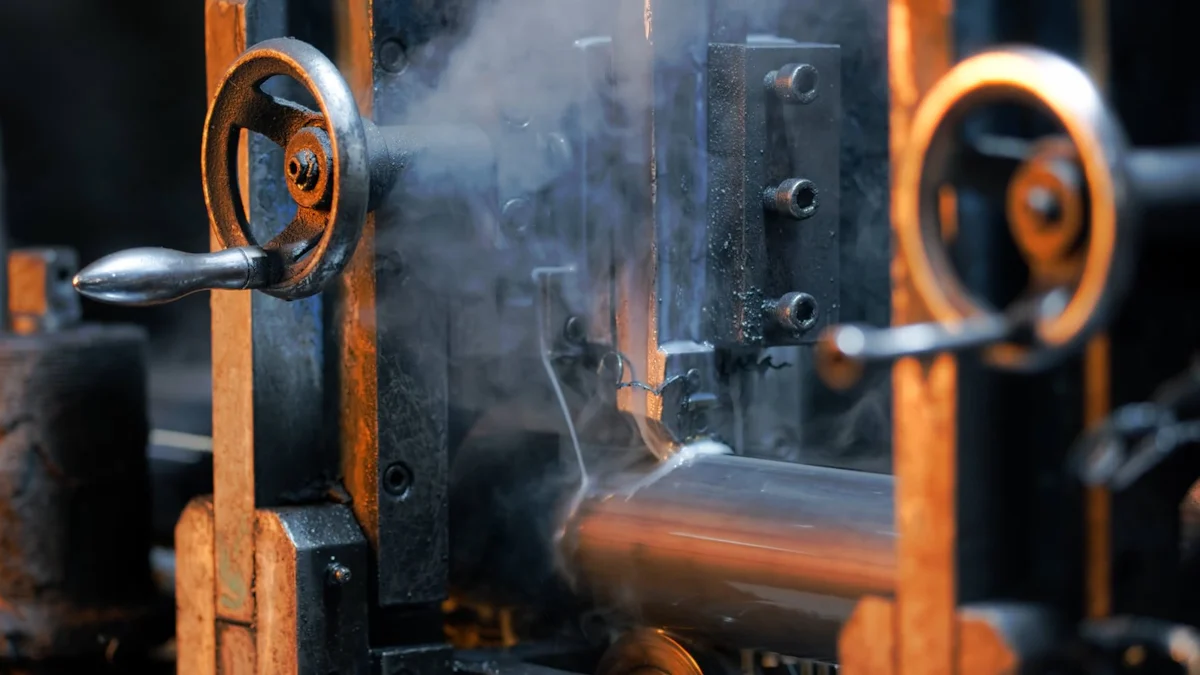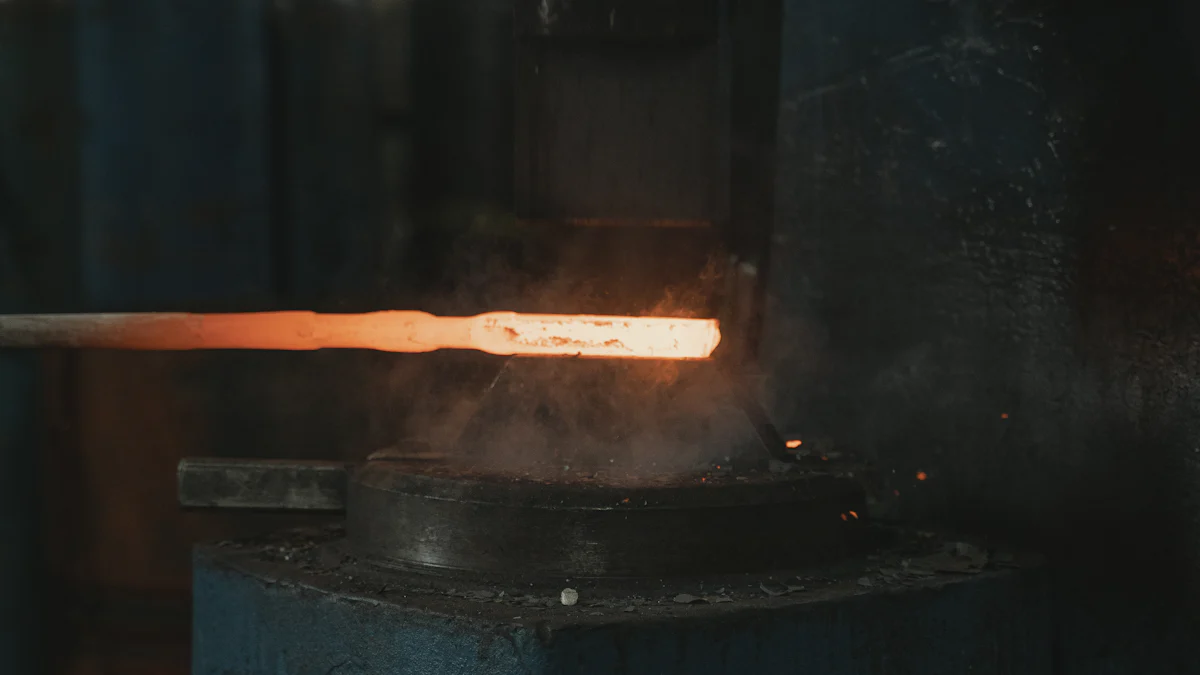
News

Induction heaters revolutionize the hardening process by offering rapid, precise, and uniform heating. This technology minimizes the risk of defective parts and enhances productivity through efficient heat transfer. You benefit from reduced cycle times and increased energy efficiency. In industrial applications, hardening plays a crucial role in improving wear resistance and fatigue life. Induction heating strengthens materials subjected to wear and tear, ensuring components last longer and perform better. By automating the process, induction heaters contribute to cost reduction and consistent quality, making them indispensable in modern manufacturing.
Key Takeaways
Induction heating offers rapid and efficient heating, significantly reducing cycle times and enhancing productivity in manufacturing.
Precise temperature control allows for targeted hardening, minimizing energy consumption and ensuring consistent quality across components.
Uniform heating achieved through induction technology prevents thermal distortion, leading to improved wear resistance and extended fatigue life of materials.
Induction heaters are essential in various industries, including automotive and aerospace, for producing durable components that withstand extreme conditions.
The integration of AI and advanced control systems in induction heating technology is set to enhance precision and optimize hardening processes further.
Induction heating is a safer alternative to traditional methods, eliminating open flames and ensuring consistent results with lower environmental impact.
Emerging applications in electric vehicles and renewable energy highlight the versatility and growing importance of induction heating in modern manufacturing.
Understanding the Hardening Process
Definition and Importance
The hardening process is a vital technique used to enhance the durability and strength of materials, particularly metals. By heating a material to a high temperature and then rapidly cooling it, you can create a hardened surface layer. This process is essential for components that face constant wear and tear, such as gears, shafts, and cutting tools. The hardening process not only increases the wear resistance of these components but also extends their fatigue life, ensuring they perform efficiently over time.
Traditional Hardening Methods
Traditional hardening methods have been around for centuries, with techniques like quenching and differential heat treatment playing significant roles. Quenching, for instance, involves immersing a heated metal in water or oil to cool it rapidly. This method has been practiced by blacksmiths since ancient times, especially in the heat treatment of swords and knives. Differential heat treatment, on the other hand, allows you to harden or soften specific areas of an object, creating a difference in hardness between these areas. This technique is particularly useful in bladesmithing, where increasing the toughness of a blade while maintaining high hardness at the edge is crucial.
Limitations of Conventional Techniques
Despite their historical significance, conventional hardening techniques come with limitations. These methods often result in uneven heating, which can lead to thermal distortion and inconsistent hardness across the material. Additionally, traditional techniques may require longer processing times and higher energy consumption, making them less efficient for modern industrial applications. The lack of precise temperature control can also result in defective parts, reducing the overall quality and reliability of the hardened components.
Advantages of Induction Heating in Hardening

Induction heating machines have transformed the hardening process by offering several distinct advantages over traditional methods. These machines provide rapid, efficient, and localized heating, which significantly enhances the hardening of components.
Rapid Heating
Induction heaters excel in delivering rapid heating. Unlike conventional methods that require preheating or warm-up time, induction heating machines transfer heat directly to the workpiece. This direct transfer reduces processing time and increases productivity. You can achieve faster heating cycles, which is crucial in industries where time efficiency is paramount. The ability to heat only the surface layer of the material, rather than the entire bulk, further accelerates the process, making it ideal for manufacturing and production environments.
Precise Temperature Control
One of the standout features of induction heating is its precise temperature control. You can adjust the electrical frequencies to control the depth and position of the initial heating within the material. This precision ensures that only the necessary areas reach the desired high temperature, minimizing energy consumption and reducing the risk of overheating. With induction heating machines, you gain the ability to tailor the hardening process to meet specific requirements, ensuring consistent quality and reducing the likelihood of defective parts.
Uniform Heating
Uniform heating is another significant advantage of using induction heaters. Traditional methods often result in uneven heating, leading to thermal distortion and inconsistent hardness. Induction heating machines, however, provide a controlled and even distribution of heat across the workpiece. This uniformity ensures that the hardening of components is consistent, enhancing their wear resistance and fatigue life. By achieving uniform heating, you can produce components that perform reliably and last longer, meeting the high standards required in modern industrial applications.
Applications of Induction Heaters in Hardening
Induction heaters have become indispensable tools in various industries due to their efficiency and precision in the hardening process. Let's explore how they are applied in different sectors.
Automotive Industry
In the automotive industry, induction heating plays a crucial role in the production of high-quality components. You can use induction heaters to harden engine parts, ensuring they withstand the rigors of daily use. This method enhances the durability and performance of components like crankshafts, camshafts, and gears. By applying localized heat, you achieve precise hardening without affecting the entire part. This selective hardening process not only improves wear resistance but also extends the fatigue life of these critical components.
Hardening of Engine Components
Engine components require exceptional strength and durability. Induction heaters provide the rapid and uniform heating necessary for effective hardening. You can target specific areas of an engine component, such as the surface of a crankshaft, to create a hardened layer. This case hardening steel technique ensures that the core remains tough and ductile, while the surface becomes resistant to wear and tear. The result is a component that performs reliably under high stress and temperature conditions, contributing to the overall efficiency and longevity of the engine.
Aerospace Industry
The aerospace industry demands components that can endure extreme conditions. Induction heating is vital in this sector for its ability to enhance the mechanical properties of aircraft parts. You can use induction heaters for tasks like bonding, composite material curing, and de-icing systems. These applications ensure that aircraft components maintain their integrity and performance during flight.
Treatment of Aircraft Parts
Aircraft parts undergo rigorous testing and treatment to meet safety standards. Induction heaters offer precise temperature control, which is essential for treating parts like turbine blades and landing gear. By using induction heating, you can achieve the desired hardness without compromising the overall properties of the material. This process enhances the reliability and safety of aircraft components, ensuring they perform optimally in demanding environments.
Tool and Die Manufacturing
In tool and die manufacturing, the hardening process is crucial for producing durable cutting tools. Induction heaters provide the rapid and localized heating needed to harden these tools effectively. You can achieve consistent hardness across the tool's surface, improving its wear resistance and cutting performance.
Hardening of Cutting Tools
Cutting tools must withstand high levels of stress and friction. Induction heating allows you to harden these tools precisely, ensuring they maintain their sharpness and effectiveness over time. By applying induction heaters, you can produce tools with a hardened surface and a tough core, making them ideal for various industrial applications. This approach not only extends the tool's lifespan but also enhances its performance, reducing the need for frequent replacements.
Case Studies and Examples
Successful Implementation in Automotive Industry
Induction heating has become a cornerstone in the automotive industry, revolutionizing the hardening process for various components. You can see its impact in the production of engine parts, where precision and efficiency are paramount. By utilizing induction heating, manufacturers achieve rapid and localized heating, which enhances the quality and durability of components like crankshafts and camshafts. This method not only improves wear resistance but also extends the fatigue life of these parts, ensuring they perform reliably under stress.
Key Benefits in Automotive Applications:
Efficiency: Induction heating reduces cycle times, leading to increased productivity.
Precision: The ability to target specific areas ensures consistent quality.
Cost-effectiveness: Automation and reduced energy consumption lower production costs.
A comprehensive review by Radyne highlights how induction heating technology enhances productivity and component quality in automotive manufacturing. This approach offers a significant advantage over traditional methods, providing a more controlled and efficient hardening process.
Comparative Analysis with Traditional Methods
When comparing induction heating to traditional hardening methods, several advantages become apparent. Traditional techniques, such as flame torch brazing or welding, often involve open flames and can lead to uneven heating. In contrast, induction heating offers a safer and more precise alternative. You benefit from localized heating, which minimizes thermal distortion and ensures uniform hardness across the material.
Advantages of Induction Heating:
No Open Flames: Reduces safety risks and environmental impact.
Consistency and Repeatability: Ensures high-quality results every time.
Automation: Streamlines the hardening process, reducing labor costs.
The SAE Technical Papers emphasize that induction heating provides lower-cost electrical apparatus suitable for automotive production. This technology is increasingly utilized in the electric vehicle sector, where precision and efficiency are crucial.
Future Trends in Induction Hardening
Technological Advancements
Induction heating technology continues to evolve, offering new possibilities for hardening processes. You can expect advancements in control systems that enhance precision and efficiency. Modern induction heating machines now feature sophisticated software that allows you to monitor and adjust parameters in real-time. This capability ensures optimal heating conditions, reducing the risk of defects and improving the quality of hardened components.
Moreover, the integration of artificial intelligence (AI) and machine learning in induction heating systems is on the rise. These technologies enable predictive maintenance and process optimization. By analyzing data from previous cycles, AI can suggest adjustments to improve outcomes. This proactive approach minimizes downtime and enhances productivity, making induction heating even more valuable in industrial applications.
Emerging Applications
The versatility of induction heating opens doors to new applications across various industries. In the automotive sector, you can see its growing use in electric vehicle (EV) production. As EVs become more prevalent, the demand for lightweight and durable components increases. Induction heating provides the precise and localized heating needed to harden these parts without compromising their structural integrity.
In the aerospace industry, induction heating is finding new roles in the treatment of advanced materials. You can use it for tasks like bonding and curing composite materials, which are essential for modern aircraft design. This application ensures that components meet stringent safety and performance standards.
Additionally, the renewable energy sector is exploring induction heating for manufacturing wind turbine components. The ability to harden specific areas of metal parts enhances their wear resistance and longevity, crucial for turbines exposed to harsh environmental conditions.
"Induction hardening is a versatile and effective method for improving the performance and lifespan of metal components in various industries." - Southwest Steel Processing
As technology advances, induction heating will continue to expand its reach, offering innovative solutions for hardening processes across diverse fields.
Induction heaters revolutionize the hardening process by offering several key benefits. You gain efficiency and precision, which are crucial for modern manufacturing. The rapid heating capability minimizes oxidation, ensuring stronger metal components. This technology enhances wear resistance and extends fatigue life, making your products more durable.
Key Advantages:
Efficiency: Faster heating reduces cycle times and boosts productivity.
Precision: Accurate temperature control ensures consistent quality.
Durability: Improved wear resistance and fatigue life enhance component longevity.
"Induction heating leads to increased productivity and process efficiency."
Previous:
Next:
Please give us a message